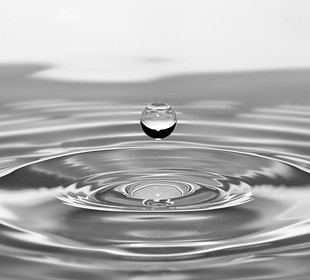
MURKY
WATERS
Drinking Water advisories in Canada
Canada is a water rich country. The Great Lakes alone, which are shared by Ontario and the USA, contain 18 percent of the world’s fresh surface water. Given this vast and natural resource, most Canadians have easy and affordable access to safe drinking water and efficient sanitation. Unfortunately, this is not the case for the Indigenous peoples where many of their reserves are contaminated.
The government regulates water quality for most Canadians but has no mandatory regulations for water on First Nations reserves.
Most of these water advisories in Canada have occurred in small communities and private areas where the local population simply do not have the funds or resources to update the infrastructure. These numbers change on a regular basis. In Ontario over 21,000 people may be affected from the 57 advisories in effect in this province today.
This issue has been ongoing for over 25 years. As of 2015 the Liberal Government of Canada promised to end all long-term drinking water advisories by 2021 and claims to be on track to meet this goal.
Drinking water advisories are preventative measures which are implemented to protect people from contaminated drinking water. Drinking water advisories in First Nation communities do not necessarily impact the entire population. They may only affect one building with the community having access to multiple water systems. For other communities with no alternatives, these advisories can significantly impact the health and livelihoods of the people living there.
The advisories may be in place because of problems in the water system, possibly due to line breaks or equipment failures. Poor filtration or disinfection during water treatment may also be a cause. Sometimes, advisories may be a precautionary measure when emergency repairs to the water distribution system are needed or if a there is a lack of required staff to support the completion of the repair. Routine maintenance procedures can address many of the problems but for many communities, complete improvements or replacements to the infrastructure are needed. These larger projects may require starting an infrastructure investment with funding agencies such as Indigenous Services Canada.
Types of Drinking Water Advisories include:
Boil Water Advisory (BWA): This is a preventative measure if the water is known and suspected to have a virus, parasites or disease-causing bacteria. If there is a question about the water quality then boiling the water will remove the possible contamination.
Do Not Consume (DNC): If there is a chemical that cannot be removed by boiling the water then this level is advised. It is recommended that the water not be used for anything such as brushing teeth or cooking anything that can be ingested in any form for people or animals. It may be used for bathing.
Do Not Use (DNU): This level is issued if the water poses a health risk where using the water can cause irritation. Boiling the water will not remove the contamination.
Ending an advisory can be complex and communities must go through several phases to resolve the issues previously outlined:
-
Feasibility studies
-
Designing a new system
-
Repairing existing systems
-
Permanently repairing the existing infrastructure
-
Constructing a new infrastructure
-
Monitoring and training
A new water treatment system can take between three to four years to complete.









